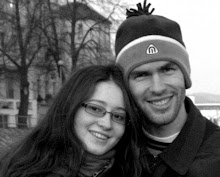Čo môžeme spraviť pre "priamu demokraciu" aj bez zmien v zákonoch
-
Zaujímať sa o návrhoch, o ktorých sa hlasuje v národnej rade.
Podávať návrhy na novely a pripomienky.
Argumentovať pre a proti novelám a pripomienkam.
Vytvoriť "občianske hlasovanie", ktoré síce nebude pre politikov záväzné, ale možno naňho časom začnú brať ohľad.
Poslanci hlasujú o mnohých zákonoch a novelách, ale pre väčšinu občanov sú tie veci príliš neprehľadné na to, aby ich sledovali. Stránka http://www.nrsr.sk/ síce mnohé informácie obsahuje, ale je neprehľadná.
Navrhovaný webový portál
-
Prepojenie s:
-
nrsr.sk - Informácie o schôdzach národnej rady, návrhoch zákonov, noviel a pozmeňovacích návrhov
zakonypreludi.sk - Online zbierka zákonov aj s možnosťou odkazovania sa na konkrétne časti, napr. zákon č. 274/2009 Z. z. § 24 odst. 3 písm. a
http://zbierka.sk/
https://lt.justice.gov.sk/ - Portál právnych predpisov
-
rozdelenie do kategórií (financie, súdnictvo, životné prostredie, ...)
stručné zhrnutie, o čom návrh hovorí
odkazy na aktuálne znenia zákonov, na ktoré sa v návrhu odkazuje (cez zakonypreludi.sk)
argumenty pre a proti alebo odborná diskusia k návrhu
parlamentné strany si pravdepodobne vypracovávajú vlastné analýzy ku každému návrhu. Ideálne by bolo, keby ich tu zverejňovali.
poslanci (strany) by tu zverejňovali dôvod prečo hlasovali tak, ako hlasovali
hlasovanie občanov + porovnanie po hlasovaní v parlamente
možnosť podávania vlastných návrhov
Čo na to potrebujeme?
-
Programátorov, ktorí by systém detailne navrhli a naimplementovali
Niektoré dáta z nrsr.sk sa nedajú úplne automaticky spracovávať. Napríklad niektoré návrhy sú len naskenované papiere uložené v PDF. Keby sme tieto chceli prepojiť s odkazmi na znenia zákonov, musel by to niekto prepísať do textu.
Odborníkov, ktorí by sa vedeli vyjadriť k návrhom.
Spoluprácu s parlamentnými stranami
-
Zverejňovali by tu svoje analýzy návrhov a svoje oficiálne postoje. Z výsledkov hlasovania nevidíme dôvody, ktoré ich ovplyvnili pri hlasovaní.
Mali by spätnú väzbu od občanov / voličov
Diskusia
-
Toto je iba veľmi hrubý návrh.
Malo by niečo takéto zmysel?
Existuje nejaký podobný portál v iných krajinách?
Chceli by ste sa zapojiť do tvorby takéhoto portálu? Ja osobne by som mohol trochu pomôcť, ale bude treba určite viac ľudí.
Parser dát z www.nrsr.sk (UPDATE)
Tu je zopár skriptov na sťahovanie a parsovanie dát z portálu www.nrsr.sk:https://github.com/michalfapso/nrsr.sk.parser
Sťahuje a spracováva informácie o hlasovaniach na schôdzach a parlamentné tlače. Výsledok si môžete pozrieť tu:http://www.fit.vutbr.cz/~ifapso/nrsr.sk.parser/out/schodza_3.html






 ) in the main window's toolbar right under the main menu. Select a green triangle of the label at the start of the image (it will get red as you click on it):
) in the main window's toolbar right under the main menu. Select a green triangle of the label at the start of the image (it will get red as you click on it):





